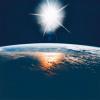A New Climate for Peace: Infographics

Pressures and shocks are expected to increase in the future
Sources:
- Cincotta, Richard 2012: Population aging: a demographic and geographic overview. Retrieved 10 Dec 2014, from http://www.newsecuritybeat.org/2012/08/population-aging-a-demographic-a….
- IEA 2014: World energy investment outlook. Paris: IEA.
- Kharas, Homi and Geoffrey Gertz 2010: The new global middle class: a crossover from west to east. In: Li, Cheng (ed.): China’s emerging middle class: beyond economic transformation. Washington, DC: Brookings Institution Press.
- Lagarde, Christine 2014: A new multilateralism for the 21st century: the Richard Dimbleby lecture. Retrieved 10 Dec 2014, from https://www.imf.org/external/np/speeches/2014/020314.htm.
- Lee, Bernice; Felix Preston; Jaakko Kooroshy; Rob Bailey and Glada Lahn 2012: Resources futures. London: Royal Institute of International Affairs.
- OECD 2013: Fragile states 2013: resource flows and trends in a shifting world. Paris: OECD.
- UK MoD 2014: Strategic trends programme: global strategic trends - out to 2045. Shrivenham: UK Ministry of Defence.
- UN-DESA 2014: World urbanization prospects: The 2014 revision. New York: United Nations.
- US NIC 2012: Global trends 2030: alternative worlds. Retrieved 09 Jan 2015, from https://globaltrends2030.files.word-press.com/2012/11/global-trends-203….
Climate-risks are cross-cutting
Sources:
- IPCC 2014: Climate change 2014: impacts, adaptation, and vulnerability. Part A: global and sectoral aspects. Contribution of Working Group II to the Fifth Assessment Report of the Intergovernmental Panel on Climate Change. Cambridge and New York: Cambridge University Press.
- UN-Water 2007: Coping with water scarcity: challenge of the twenty-first century. Geneva: United Nations.
- WFP and Met Office 2012: Climate impacts on food security and nutrition. A review of existing knowledge. Exeter: WFP; Met Office, Hadley Centre for Climate Prediction and Research.
From fragility to resilience
Sources:
- Bellina, Séverine; Dominique Darbon; Stein Sundstol Eriksen and Jacob Ole Sending 2009: The legitimacy of the state in fragile situations. Oslo: Norad/ French Ministry of Foreign and European Affairs.
- OECD 2008: Concepts and dilemmas of state building in fragile situations. Paris: OECD.
- OECD 2013: Fragile states 2013: resource flows and trends in a shifting world. Paris: OECD.
Situations of fragility
Sources:
- AfDB 2014: Addressing fragility and building resilience in Africa: the African Development Bank Group strategy 2014 – 2019. Retrieved 26 Mar 2015, from http://www.afdb.org/fileadmin/uploads/afdb/Documents/Policy-Documents/A….
- OECD 2008: Concepts and dilemmas of state building in fragile situations. Paris: OECD.
- OECD 2013: Fragile states 2013: resource flows and trends in a shifting world. Paris: OECD. AfDB (2014a)
Rain-fed agriculture and conflicts
Sources:
- International Crisis Group 2014a: The security challenges of pastoralism in Central Africa. Brussels: International Crisis Group.
- International Crisis Group 2014b: Water pressures in Central Asia. Brussels: International Crisis Group.
- Stanfield, J. D.; Jennifer Brick Murtazashvili; Safar, M.Y. and Akram Salam 2013: Community documentation of land tenure and its contribution to state-building in Afghanistan. In: Unruh, John; Williams, Rhodri (eds.): Land and post-conflict peacebuilding. Oxon: Routledge/Earthscan.
Risk factors around natural resources
Sources:
- AfDB 2014b: From fragility to resilience: managing natural resources in fragile states in Africa. Tunis: African Development Bank Group.
- FAO 2000: Conflict and natural resources management. Rome: FAO.
- Rüttinger, Lukas; Antoine Morin; Annabelle Houdret; Dennis Tänzler and Clementine Burnley 2011a: Water, crisis and climate change assessment framework. Berlin: Adelphi.
The commodity super-cycle
Data from IMF 2014: IMF primary commodity prices. Retrieved 8 Jan 2015, from http://www.imf.org/external/np/res/commod/index.aspx.
Global food crises
Sources:
- Lee, Bernice; Felix Preston; Jaakko Kooroshy; Rob Bailey and Glada Lahn 2012: Resources futures. London: Royal Institute of International Affairs.
- World Bank 2014a: Commodity markets outlook October 2014. Retrieved 24 Nov 2014, from http://www.worldbank.org/content/dam/Worldbank/GEP/GEPcommodities/commo….
- World Bank 2015b: Commodity markets outlook. Retrieved 18 Feb 2015, from http://www.worldbank.org/content/dam/World-bank/GEP/GEPcommodities/GEP2….
- World Economic Forum 2012: New models for addressing supply chain and transport risk. An initiative of the risk response network in collaboration with Accenture. Retrieved 10 Feb 2015, from http://www3.weforum.org/docs/WEF_SCT_RRN_NewModelsAddressingSupplyChain….
Heat map: Where is the highest risk of water conflict?
Map reproduced from Peek, Katie 2014: Where will the world’s water conflicts erupt? A heatmap of war over water. In: Popular Science: The Water Issue, June 2014. Retrieved 10 Dec 2014, from http://www.popsci.com/article/science/where-will-worlds-water-conflicts…. Map based on the Transboundary Freshwater Dispute Database by the Department of Geosciences, Oregon State University.
Humanitarian disaster response: How to ‘do no harm’
Sources:
- Alexander, Rajan 2006: Tsunami: build back better. Mantra aside, an aid gone wrong story? Bangalore: Development Consultancy Group.
- Street, A. 2012: Applying conflict-sensitive methodologies in rapid-onset emergencies. In: Humanitarian Exchange Magazine 1:54, pp n.a.
- UNEP and OCHA 2014: Environment and humanitarian action, increasing effectiveness, sustainability and accountability. Geneva: Joint UNEP/OCHA Environment Unit.



























